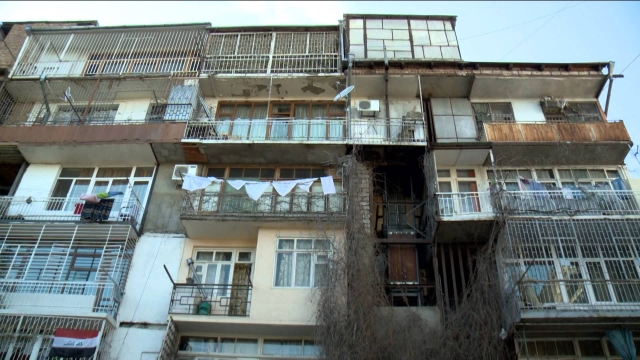Tbilisi City Hall Launches ‘Khrushchovka’ Replacement Project
Khrushchovka is a term used for a type of Soviet-built apartment building, typically a low-cost, concrete-paneled (or sometimes brick) generally five-story building, constructed during the government of Soviet Premier Nikita Khrushchov in the mid-1950s and early 1960s.
During his election campaign, now-Mayor of Tbilisi, Kakha Kaladze, promised to gradually tear down and replace the approximately 700 Khrushchovka buildings throughout the city, calling them “ugly and dangerous to live in.” The buildings, found all across the former Soviet Union, were originally built with a 25-year life span in mind, but most are now approaching 60 years of use. They were built quickly and simply, designed to be functional, cheap, and fit as many families as possible as a response to the post-WWII housing crisis faced by the Soviet Union as waves of migration brought more people to urban areas. In fact, Khrushchovkas were praised at the time as an innovative solution to a severe problem. In 1967, an official from the US’s National Bureau of Standards was quoted in the Chicago Tribune as saying, “What the Russians have done is to develop the only technology in the world to produce acceptable, low-cost housing on a large scale.”
Yesterday, Tbilisi City Hall announced the realization of Kaladze’s campaign promise and will launch a project to gradually replace Tbilisi’s Khrushchovkas. During the campaign, Kaladze said that displaced Khrushchovka owners would be able to choose between financial compensation or a new apartment.
There are many disadvantages of a standard Khrushchovka apartment – low ceilings, poor insulation, tiny kitchens and bathrooms, cramped living spaces, uneven floors, cracked walls and dilapidated stairwells, and no elevators. Often, repairs to the building were made in a semi-professional patchwork over time, causing safety concerns. The buildings’ discolored grey concrete and graffiti covered external walls are also an eyesore, particularly compared to Tbilisi’s elegant and delicate pre-Soviet architecture.
Many people are attached to their Khrushchovkas, despite the negative aspects. Some have invested significant time in money in renovating their apartments, evidenced by the variety of mismatched balconies spangled on the outside of many buildings, and are resistant to the idea of being resettled. One advantage of Khrushchovka buildings is that they often have large yards with mature trees. Generations of a family have often lived in the same apartment, embedded with memories and history, relationships with neighbors, and affection for the neighborhood. There are also concerns over new developments, built sloppily by developers in an attempt to make a quick profit, many older buildings are regarded as more desirable than new constructions.
Regarding specific plans, Kaladze said, “Tbilisi City Hall announces the expression of interest in order to develop a residential complex on the 30,205 sq.m land plot, located in the III massive of Varketili district, and we invite the private sector. The winner in the expression of interest will implement this project in accordance with the Development Regulation Plan adopted by Tbilisi City Council.” The first stage of replacements is planned for four blocks of Khrushchovka apartments in the 6th and 8th quartiles of the III massive in the Varketili District – in the east of the city, near the airport. Currently 170 families live in these buildings, and Kaladze says they will be given new “modern and European style” apartments, the same size or larger as their current homes. “This is not a one-time project,” says Kaladze, “the process is alive and it will give us the chance to implement the large-scale so-called Khrushchovka project and I am very glad that this project has started.”
Similar projects to replace outdated housing and resettle families have had mixed results in other post-Soviet countries. Last year, Moscow announced a 20-year plan to demolish 8,000 Khrushchovka buildings and resettle more than 1.6 million residents. Some experts estimate the project could cost as much as $100 billion. Despite promises that replacement apartments will be an average of 20% larger, many residents are resistant, arguing that the blocks are part of their country’s history and culture, and forcing people out will mainly benefit the construction lobby.
As to what will happen to the land where current Khrushchovkas now stand, the most likely answer is that they will be replaced by expensive private developments, high rises unattractive in a new way. As increasingly more green areas are systematically chipped away, many Tbilisi residents hope that it will provide an opportunity to introduce more green spaces into the city.
By Samantha Guthrie
Photo: city.kvira.ge
Related Stories:












